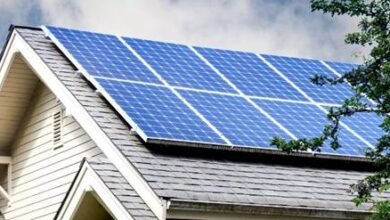Home Insurance in High-Risk Fire Zones in Murrieta, CA
Murrieta, California, is known for its dry climate and proximity to brushland, which makes it highly susceptible to wildfires. Homeowners in these areas face unique challenges when it comes to securing comprehensive and affordable home insurance. This article will provide a thorough guide on home insurance for high-risk fire zones in Murrieta, including understanding fire risks, choosing the right insurance policy, and protecting your home from wildfire damage.
Murrieta’s fire risks are primarily driven by its geography and weather patterns. The city’s location near chaparral and forested areas creates ideal conditions for wildfires, especially during the dry season. Over the years, fire incidents have increased, with multiple homes and neighborhoods being affected by large-scale wildfires. This makes it imperative for homeowners to be aware of the risks and plan accordingly.
Importance of Home Insurance in High-Risk Zones
Home insurance in fire-prone areas is essential, as it provides financial protection in case of fire-related damage. Without adequate insurance coverage, homeowners could face massive repair and replacement costs. In high-risk zones like Murrieta, insurance can be more complex due to the increased likelihood of fire damage.
Understanding Fire Zones
High-risk fire zones are areas classified based on their susceptibility to wildfires. California’s Department of Forestry and Fire Protection (CAL FIRE) identifies and maps these zones using fire hazard severity zones (FHSZ).
Factors such as dry vegetation, high winds, extreme heat, and proximity to wildfire-prone areas contribute to the fire risk in Murrieta. These risks can vary based on location, elevation, and neighborhood.
Home Insurance Basics
Types of Home Insurance Policies
Homeowners can choose from different insurance policies such as:
- HO-3: Standard coverage that protects against various risks, including fire.
- HO-5: Comprehensive coverage with broader protection.
Key Terms and Coverage Types
Understanding terms like “replacement cost,” “dwelling coverage,” and “personal property coverage” is crucial when selecting the right policy.
Insurance Challenges in High-Risk Areas
High-risk fire zones often lead to significantly higher premiums. Insurance companies charge more due to the greater chance of filing a claim.
Many policies in high-risk areas come with limitations or exclusions for wildfire damage. Homeowners may have to purchase additional endorsements or specialized policies.
The reinsurance market plays a crucial role in determining the availability and cost of insurance. In high-risk zones, insurers often rely on reinsurance to cover large-scale losses, which can lead to policy changes and higher costs for consumers.
Assessing Your Risk
Homeowners can assess their fire risk using CAL FIRE’s fire danger ratings, which categorize areas based on their fire hazard potential. Murrieta has experienced several large fires in the past decade, which highlight the area’s susceptibility to wildfires.
Hiring a professional to assess your home’s fire risk can help you take preventative measures and potentially lower your insurance premiums.
Choosing the Right Insurance Provider
Several companies offer policies tailored to high-risk fire zones, including State Farm, Allstate, and Farmers Insurance.
It’s essential to compare coverage limits, deductibles, and premium rates across different providers to find the best deal for your home.
Reviewing customer feedback and satisfaction ratings can provide insights into how well insurance companies handle claims in fire-prone areas.
Mitigation Strategies for Homeowners
Using fire-resistant materials such as stucco, metal roofing, and double-pane windows can reduce the risk of fire damage.
Firewise landscaping techniques, such as maintaining defensible space, planting fire-resistant plants, and removing dead vegetation, can protect homes from wildfires.
Having an emergency plan in place, including evacuation routes, communication plans, and emergency kits, is critical for families living in fire-prone areas.
Claims Process in Fire Events
When filing a claim after a fire, homeowners must report the incident promptly and provide a detailed description of the damage. Documentation such as photos, receipts, and inventory lists of damaged property will help support your claim.
Homeowners may face challenges like claim delays or disputes over the value of the damage. Working with a public adjuster or insurance attorney may help resolve these issues.
State Regulations and Support
California has strict regulations to reduce fire risks, including building codes, fire-resistant requirements, and defensible space mandates.
CAL FIRE and other state agencies provide resources such as fire prevention tips, grants for fireproofing homes, and evacuation assistance.
Homeowners may qualify for discounts on their insurance premiums if they invest in fireproofing their homes or meet state fire safety standards.
Conclusion
Homeowners in Murrieta’s high-risk fire zones must take proactive steps to protect their homes, from purchasing the right insurance to implementing fire mitigation strategies.
Regularly update your insurance policy, conduct annual home assessments, and stay informed about fire danger levels and local regulations.
Appendices
Resources for Fire Safety Information
Links to resources like CAL FIRE’s website, fire safety guides, and local fire preparedness organizations.
Contact Information for Local Fire Departments
A list of fire departments and emergency services in Murrieta and surrounding areas.
FAQs about Home Insurance in High-Risk Zones
Common questions homeowners ask about getting and maintaining home insurance in fire-prone areas.

